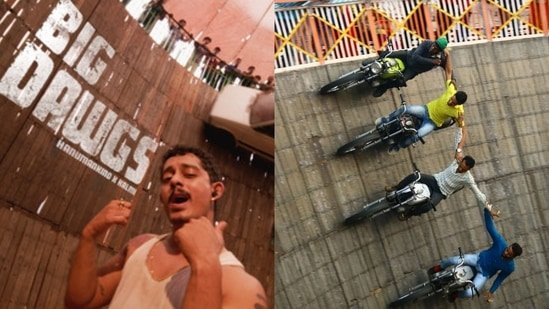See what goes on behind the scenes of the notorious “Maut ka Kuan,” which has been a feature of Indian fairs and carnivals for decades.

The enduringly catchy Big Dawgs by Hanumankind, alias Sooraj Cherukat, has become one of the year’s most successful Indian hip-hop tracks. It debuted on the Billboard Hot 100 and is currently easily cruising at #57 on the worldwide list. The words and tone are unquestionably creative, but one aspect of this grungy video that really sticks out is the stark background. The video’s primary venue, The Well of Death, or more precisely Maut ka Kuan, is where fearless stuntmen circle Sooraj on their motorcycles and cars—no helmets required.
The people inside the Kuan
This attraction has been there for decades, even if for many of us it may be the first time to witness the Maut ka Kuan depicted in a dynamic moment of pop culture. The term “motordrome” is said to have helped popularize the Well of Death in the West. Since then, it has spread to rural India, where individuals risk their lives for years under a master while riding a 60-foot handcrafted wooden cylinder.
In order to follow these artists on their journey, VICE sent a team to a fair in Solapur, Maharastra, five years ago. Ken Hermann, the assigned photographer, got the opportunity to speak with these groups of riders and gain insight into the lives of these men and women who risk everything for the pure thrill of showmanship.
One of the few female drivers in the arena, Radha, was the rider who truly caught his attention. The employer initially disapproved of her driving. Being just 13 at the time, he didn’t think she could pull it off. He advised her to return to her parents and get their consent. She followed through, they approved, and she conducted a trial run. Her boss knew she could pull it off and that she meant it. And because she draws in a bigger audience, she gets paid a little bit more now.
The idea to turn the rush of adrenaline experienced inside the ring into music was not original to Hanumankind’s music video. WOR, another documentary-style music video by Django Django that was published in 2013 likewise focused on the lives of these riders at an Allahabad carnival, revealing their innermost thoughts and the psychology of risking your life to get a few laughs.
Because of the type of work I perform, ladies like me everywhere I go. They compare myself to a hero. “I don’t consider myself a hero,” said Praveen, the cyclist.”The only people who believe I’m a hero are the viewers.” Most performances last for ten days, according to VICE, after which everything needs to be manually disassembled and rebuilt in various parts of the nation; riders live on the road and travel for eleven months of the year.
Despite the dedication of the stuntmen, this sport is prohibited in several states, including Delhi, and it won’t be long before this form of performance disappears. Some of the causes are an indifferent public, flimsy safety rules, and a shortage of working wells.
Although there is no shortage of young people prepared to put their lives in danger, the general public’s perception of a circus or carnival has been rapidly eroding. Very few people still want to watch the sport live since it’s easier to get the same sense over the phone and because daredevils on OTT platforms are more exciting. This is because fewer people dislike crowds and the idea of having to leave the comforts of their sofa.




